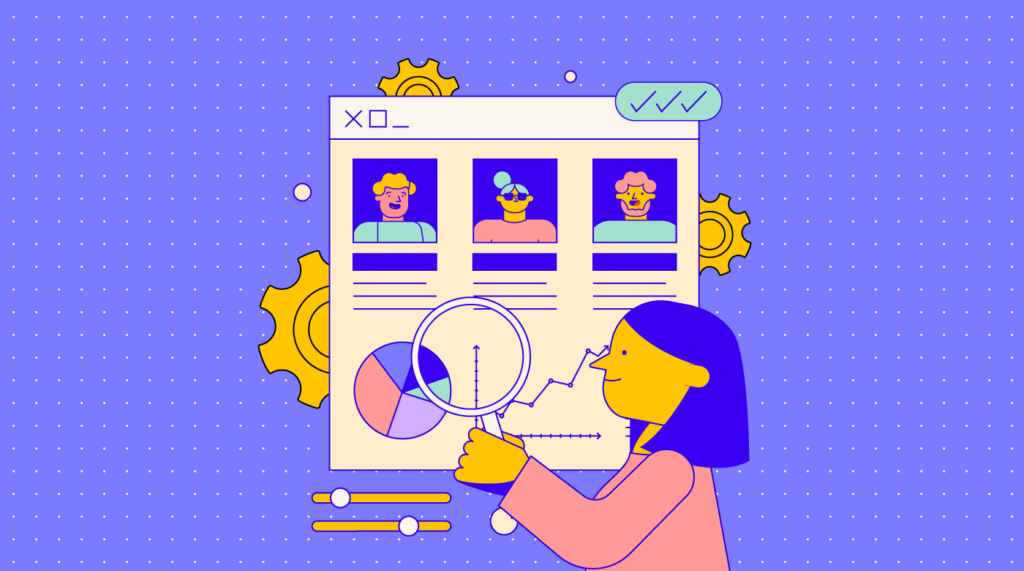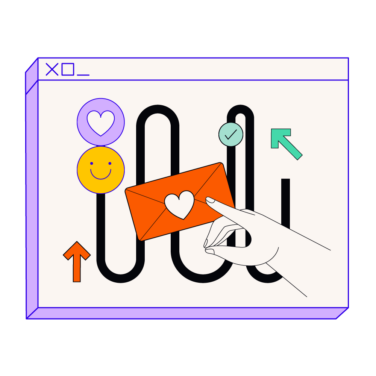Managing the customer experience, defined by Market Business News as "the way customers feel or perceive the whole series of encounters when they buy goods or services or interact with a company,” is an essential aspect of understanding and running a business. But it can also be quite a challenge.
Thankfully, customer experience management software is designed to make this process a little easier. It is a powerful tool for understanding how to create a better business that earns more customers and grows more sales.
In recent decades, customer experience management (CEM) software has become one of the best resources for businesses attempting to improve the customer experience. There are several types of management software:
- A/B testing software
- Customer behavior analytics software
- Help desk software
- Customer interaction monitoring software
- Content management software
- Financial management software
- Web analytics software
- Survey software
Taking a closer look at each one can help you choose the best option for your business.
Main types of customer experience management software
According to Microsoft, CEM software is any program that companies can use to “focus on customer engagement, satisfaction, and experience.” It’s software that helps your business stay connected with customers by using analytics to track customer engagement and responses. It also uses technology to address the issues that analytics identifies.
There are different types of CEM software that cover the basic needs of businesses. For example, there are customer management software options dedicated to customer analytics. There are software options focused on customer support, and there are software options focused on creating and distributing content.
While most CEM software covers some or all these categories, some options target specific tasks. Let’s consider how the various types of management software fit within these broader categories.
Customer analytics
A/B testing software allows companies to test multiple versions of a web page. For example, the version with blue buttons gets more clicks than the one with green buttons.
Customer behavior analytics software can track how customers behave on a business’s website, how often they visit and shop, and how they react to issues.
Financial management software helps companies use data from financial results and the customer experience to determine how customers’ feelings impact financial gains or losses.
Web analytics software helps marketers study visitor behavior on websites to boost the performance of their online campaigns. It provides actionable insight into website traffic trends over time, which can help measure the effectiveness of content marketing.
Customer support
Help desk software is great for client-facing teams to manage inbound requests and provide customer service.
Customer interaction monitoring software helps companies monitor how their customers interact with their websites and customer service teams.
Survey software allows companies to conduct a customer experience survey and gather customer feedback on products or services.
Content management and distribution
Content management software allows companies to publish and distribute content such as emails or blog posts.
All customer experience strategy types affect customer satisfaction and customer feedback management. When used correctly, each option will provide a great customer experience by supporting businesses with the analytics and feedback management tools necessary to improve performance.
Uses and applications of customer experience management software by type
You can use CEM software to improve customer service, run marketing campaigns, and facilitate other initiatives.
However, business leaders and marketers should understand that their companies don’t need all available features just because they’re available on a platform. An open-source solution may work better than a more expensive paid version if your needs are simpler.
What type of CEM software is best for customer behavior analytics?
One of the best ways to understand customer behavior is by looking at metrics like page views, time spent on site, and bounce rate.
However, suppose you’re looking for more detailed information about each customer interaction or conversion in your marketing funnel (from prospecting to final sale). In that case, it may be beneficial to invest in a solution that includes tools for frictionless customer journey mapping and analytics.
What type of CEM software is best for personalizing customer experiences?
Personalization is important for companies looking to encourage customer loyalty. That’s why CEM software should include features like customizable workflows, predictive analytics, and related communications.
Here are examples of platforms that emphasize personalizing customer experiences:
- Zendesk, which puts everything you know about a customer in one place.
- Salesforce, which includes the ability to set up email campaigns and marketing automation workflows.
- Desk.com, which is an open platform that you can use for chatbots, and it has other features like design customization and advanced analytics.
What type of CEM software has the best help desk features?
Help desk features are handy for companies that deal with a lot of customer requests and complaints. Some of the best CEM platforms that have this feature are the following:
- Desk.com, with its open platform and customizable mobile apps.
- Freshdesk, with its flexible workflow system featuring an intuitive user interface.
- Zendesk, with its advanced reporting features and customizable widgets.
We can also group customer experience management software by how it works on a technical level. There are a few options:
- Cloud based and web based
- Application based
- Open source
Cloud- and web-based software
Understanding that customer experience management cloud- and web-based options are great for gathering customer feedback, thereby improving customer satisfaction.
The most effective CEM platforms
- allow for customer self-service via chatbots and mobile apps (they work anywhere, anytime);
- have users sign up for accounts where they make payments through recurring subscriptions;
- allow users to access the software on any device with a web browser or mobile app, no installation required; and
- allow users to access their accounts and features directly from the company’s website, no downloads required.
Application-based software
This kind of software works best for groups with high volumes of inbound requests, such as technical support or sales teams. Choose this CEM platform if you need to track and manage customer data and interactions across multiple channels such as chat, phone calls, emails, social media messages, and text messaging.
Application-based software
- is delivered as an app that users can download and install on their devices and
- is known as clienteling software—it allows you to connect with customers on a personal level through an account manager who can help with any questions or problems.
Open-source software
Open-source customer experience software is free to use, and you can modify it with the help of outside developers.
Open-source software
- is designed for medium to large businesses with the resources to tailor their CEM platforms according to their specific needs and requirements and
- offers sophisticated features such as reporting tools or integrations with other systems including third-party apps.
You can find open-source customer experience software through the Google Workspace Marketplace and Microsoft Azure. You can also download and install it yourself without having to pay any fees upfront.
Features of customer experience management software
Why is it important to understand these features? Because they can help you determine which option is best for your company. The software you choose will have a direct impact on how well you’re able to track your customer feedback.
You should consider CEM software that contains the following features at a minimum.
Reporting tools: These provide you with detailed analytics about your customers’ behavior, such as their locations, the devices they use to access your website or app, and what time of day they’re most active online.
You can compare this customer data against industry benchmarks and other leading businesses’ data to track performance over time.
Reporting tools should also include heat mapping, which shows you the most popular areas of your website and what sections or pages generate the highest traffic volume.
Integrations: Many CEM solutions offer integrations with third-party software (including customer relationship management systems) that allow marketers to see a complete picture of each customer’s journey from start to finish.
Video and voice calling: One of the most effective ways for technical support teams to communicate with customers is via video or phone calls.
That’s why software should include integrated tools that enable companies to respond in real-time—no matter where employees are or what devices they’re using.
Self-service capabilities: Taking into account digital customer experience, you should recognize that customer satisfaction is affected by a user’s ability to solve problems or find answers on a company’s website.
Therefore, customer service software should include chatbots that give users a way to communicate with your business without waiting for any assistance from representatives.
Mobile apps: One facet of meeting customer expectations is being able to communicate with them on their own terms via mobile apps and social media.
This gives companies an advantage because it allows them to engage directly with, for example, Yelp or Facebook reviews and quickly respond whenever customers have new questions or concerns.
How should you determine which features you need in your customer experience management software?
First, understand your customer journey—the customer’s path to purchase. In other words, the interactions they have with your company both online and offline. A successful customer experience strategy begins with a solid customer experience vision.
Next, map out your customer journey and determine the steps involved at each stage. Once you’ve gathered enough customer data, decide which customer experience software features are most appropriate.
For example, if you’re a help desk expert who manages technical support issues from start to finish, you may want to choose tools that include chatbots. Conversely, marketing managers might be more interested in reporting or integration features.
Review the various features, then prioritize your requirements based on how they fit in with your company’s culture, customer experience strategy, and other business objectives.
Related Read: Customer Journey Map Examples And Templates
How to choose the best type of customer experience software for your business
Be careful when choosing the software for your business. If you choose the wrong software, you’ll be wasting money and time that you could have saved for something else.
For example, if your company is growing but you’re not ready to expand into new markets or hire more employees, it might work for you to invest in a simpler customer experience management solution. However, if you want the best tools available for customer engagement and behavior analytics, you may want to start with more advanced software that can scale your business.
What should you consider when choosing software for your business?
It’s important to have regular meetings between key stakeholders in your company, such as marketers and executives when deciding on the features you need in a customer experience solution. This ensures that everyone involved with creating or delivering your brand message is on the same page.
Also, consider the following when choosing a CEM platform:
- Are you willing to pay for additional features? Or is your solution going to be limited?
- How many employees will need access? Do they have enough bandwidth? Will it work on their preferred devices?
- How will you communicate your customer experience vision to your customers? What are the messaging standards for inbound calls, emails, and chats?
How do your existing systems affect how you choose software for your business?
You need to be sure that the system you choose will integrate well with what you already use because integration can save time and resources.
For example, if you’re currently using a help desk system, it will need to integrate with your customer experience management software. If not, it could be time-consuming and complicated for employees to manage support requests from two systems simultaneously.
Another example would be chatbot software. If you already have a simple chatbot on your website, it may not be necessary to invest in a more advanced customer experience platform that offers chatbots.
For more, check out our pick of the best customer experience management software on the market today.
Related Lists of Tools:
Need expert help selecting the right Customer Experience Software?
If you’re struggling to choose the right software, let us help you. Just share your needs in the form below and you’ll get free access to our dedicated software advisors who match and connect you with the best vendors for your needs.



